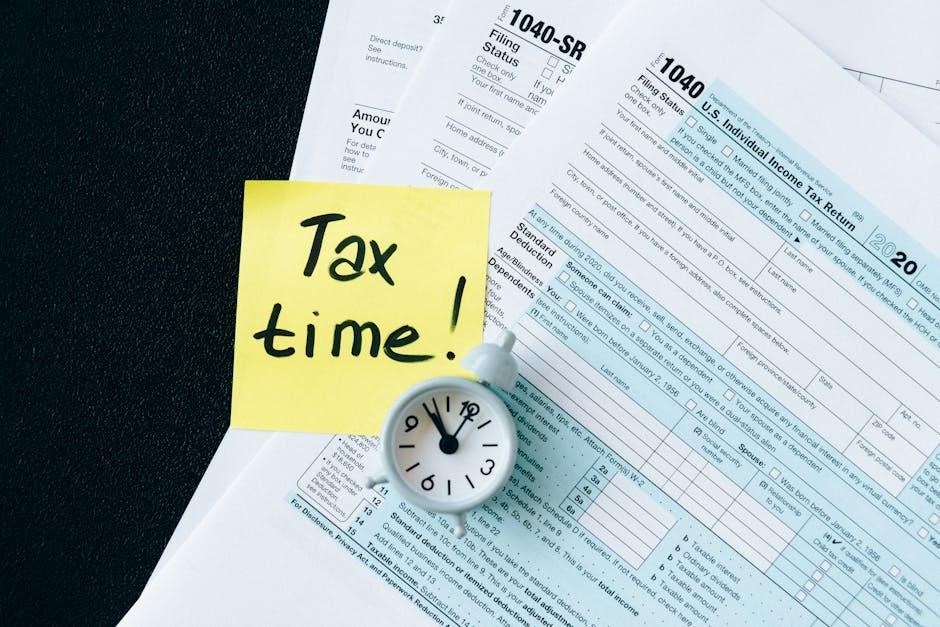Employee Equipment Responsibility Form: A Comprehensive Guide
An Employee Equipment Responsibility Form is a crucial document that establishes clear guidelines for company-owned equipment used by employees. This form outlines the responsibilities of both the company and the employee‚ ensuring proper care‚ maintenance‚ and return of equipment. It also protects both parties from liability in unforeseen circumstances.
What is an Employee Equipment Responsibility Form?
An Employee Equipment Responsibility Form is a formal document outlining the agreement between a company and its employee regarding the use and care of company-owned equipment. This form serves as a record of equipment issued to an employee‚ including details like model and serial numbers; It also acknowledges the employee’s responsibility for the equipment’s safekeeping and proper use.
The purpose of this form is to establish clear expectations and standards for the use of company equipment‚ whether it’s used on-site‚ off-site‚ or at the employee’s home. It ensures that employees understand their obligations regarding the condition and return of the items. By signing the form‚ the employee acknowledges their responsibility and agrees to adhere to the outlined terms.
This agreement typically includes‚ but is not limited to‚ items such as laptops‚ cell phones‚ tools‚ and other work-related equipment. It’s a critical tool for managing company assets and mitigating potential risks associated with equipment loss‚ damage‚ or misuse. Moreover‚ it provides a framework for addressing these issues should they arise.
Purpose of the Form
The primary purpose of an Employee Equipment Responsibility Form is to establish a clear understanding between the employer and employee regarding the use‚ care‚ and responsibility for company-owned equipment. This form serves as a documented agreement that protects both parties from potential liabilities and misunderstandings.
It outlines the employee’s obligations to maintain the equipment in good working order‚ protect it from damage or loss‚ and use it solely for authorized work-related purposes. By signing the form‚ the employee acknowledges their responsibility for the equipment and agrees to adhere to the company’s policies regarding its use.
Furthermore‚ the form clarifies the consequences of equipment loss‚ damage‚ or theft‚ ensuring that employees are aware of their potential financial responsibility. It also facilitates a smooth offboarding process by providing a clear record of equipment issued to the employee‚ making it easier to track and recover company assets upon termination of employment.
In essence‚ the Employee Equipment Responsibility Form is a proactive measure to safeguard company property‚ promote employee accountability‚ and minimize potential disputes related to equipment use and care.
Key Elements of the Form

An effective Employee Equipment Responsibility Form should contain several key elements to ensure clarity and comprehensiveness. First and foremost‚ it must include a detailed description of the equipment being issued‚ including model numbers‚ serial numbers‚ and any identifying marks. This ensures that there is no ambiguity about the specific items the employee is responsible for.

The form should also clearly state the employee’s responsibilities regarding the equipment’s care‚ maintenance‚ and proper usage. This section should outline expectations for protecting the equipment from damage‚ loss‚ or theft‚ as well as guidelines for reporting any issues or malfunctions.
Another crucial element is a statement acknowledging the employee’s understanding that they may be held financially responsible for lost or damaged equipment. The form should specify the circumstances under which the employee may be liable and the procedures for determining the amount of compensation owed.
Finally‚ the form should include a section for both the employer’s and employee’s signatures‚ along with the date. This serves as proof that both parties have read‚ understood‚ and agreed to the terms outlined in the form‚ making it a legally binding document.
Employee Responsibilities Outlined

The Employee Equipment Responsibility Form must clearly outline the employee’s specific responsibilities to ensure the proper care and use of company equipment. One primary responsibility is to use the equipment solely for authorized work-related purposes‚ adhering to company policies and guidelines. Misuse or unauthorized use can lead to disciplinary action.
Another key responsibility is maintaining the equipment in good working condition. This includes regular cleaning‚ proper storage‚ and reporting any malfunctions or damages promptly. Employees should not attempt to repair equipment themselves unless explicitly authorized.
Employees are also responsible for safeguarding the equipment against loss‚ theft‚ or damage. This may involve securing equipment when not in use‚ avoiding risky situations‚ and following company protocols for transporting equipment off-site. They should also be aware of the potential consequences of negligence or misuse.
Furthermore‚ employees are responsible for returning the equipment in good working order upon termination of employment or when requested by the company. Failure to do so may result in financial penalties or legal action. By clearly defining these responsibilities‚ the form promotes accountability and protects company assets.
Company Responsibilities Outlined
While the Employee Equipment Responsibility Form primarily focuses on employee obligations‚ it’s equally important to define the company’s responsibilities. The company is responsible for providing equipment that is in good working order and suitable for the intended purpose. This includes ensuring that the equipment meets safety standards and is properly maintained before being issued to employees.
Furthermore‚ the company is responsible for providing adequate training and instructions on how to use the equipment safely and effectively. This training should cover proper operation‚ maintenance procedures‚ and troubleshooting common issues. Clear documentation‚ such as user manuals or online resources‚ should also be readily available.
The company must also establish clear policies and procedures regarding the use of company equipment‚ including acceptable use guidelines‚ security protocols‚ and reporting procedures. These policies should be communicated effectively to all employees and consistently enforced.
Additionally‚ the company is responsible for maintaining insurance coverage that protects against loss or damage to company equipment. This insurance should cover a range of risks‚ including theft‚ fire‚ and accidental damage. By fulfilling these responsibilities‚ the company creates a supportive environment for employees to use equipment effectively and responsibly.
Consequences of Equipment Loss or Damage
Clearly outlining the consequences of equipment loss or damage is a vital component of the Employee Equipment Responsibility Form. This section serves to deter negligence and reinforce the importance of responsible equipment handling. The consequences should be proportionate to the severity of the loss or damage and should be consistently applied across all employees.
Minor damage due to normal wear and tear may not result in disciplinary action‚ but repeated instances of neglect could lead to a warning or other corrective measures. For more significant damage resulting from misuse or negligence‚ employees may be held financially responsible for repair costs or replacement value.
In cases of theft or intentional damage‚ employees may face more severe consequences‚ including termination of employment and potential criminal prosecution. The form should explicitly state that failure to return equipment upon termination of employment will be considered theft and may result in legal action.
It’s also important to include a process for reporting loss or damage promptly. Employees should understand their obligation to notify the company immediately if equipment is lost‚ stolen‚ or damaged. Failure to report such incidents in a timely manner may result in additional consequences.
Customization of the Form

The Employee Equipment Responsibility Form should be tailored to reflect the specific needs and policies of your organization. Customization ensures that the form accurately addresses the types of equipment issued‚ the industry-specific risks involved‚ and the company’s unique operational requirements. Generic templates can provide a starting point‚ but they should be carefully reviewed and modified to align with your company’s context.
Consider adding sections that detail specific equipment usage guidelines‚ maintenance procedures‚ or safety protocols relevant to your industry. For example‚ a construction company might include specific instructions on the proper use of power tools‚ while a technology company might focus on data security measures for laptops and mobile devices.
You can also customize the form to include company-specific policies regarding equipment use outside of work hours‚ remote access protocols‚ or data encryption requirements. Ensure that the language used is clear‚ concise‚ and easily understood by all employees‚ regardless of their technical expertise.
Finally‚ remember to include a section for employees to acknowledge that they have read‚ understood‚ and agree to abide by the terms and conditions outlined in the form. This section should include a signature line and date field to provide a verifiable record of the agreement.
Using the Form During Offboarding
The Employee Equipment Responsibility Form plays a crucial role during the offboarding process‚ ensuring a smooth and organized transition. As an employee prepares to leave the company‚ the form serves as a checklist to verify the return of all assigned equipment. This includes laptops‚ cell phones‚ tools‚ vehicles‚ and any other company property in the employee’s possession.
During the offboarding process‚ the manager or HR representative should review the form with the departing employee‚ confirming the condition of the equipment and documenting any damages or discrepancies. This review should be conducted in a timely manner to avoid delays in the offboarding process.
The form should also outline the procedures for returning the equipment‚ including the designated drop-off location and any specific instructions for packaging or securing the items. It should also clarify the employee’s responsibility for any outstanding fees or charges related to the equipment‚ such as repair costs or replacement fees.
Properly utilizing the form during offboarding minimizes the risk of lost or damaged equipment and helps to protect the company’s assets. It also provides a clear record of the employee’s responsibilities and obligations‚ ensuring a fair and transparent separation process.
Free Templates and Examples
To simplify the process of creating an Employee Equipment Responsibility Form‚ numerous free templates and examples are readily available online. These resources offer a starting point for organizations to customize the form to meet their specific needs and policies.
Several websites provide downloadable templates in various formats‚ such as PDF‚ Word‚ and Google Docs. These templates typically include pre-written sections covering key elements like employee information‚ equipment details‚ responsibilities‚ and consequences of loss or damage. Organizations can easily modify these sections to align with their internal procedures and legal requirements.
In addition to templates‚ many websites also offer examples of completed forms‚ showcasing how the information should be filled out and organized. These examples can be particularly helpful for understanding the intended purpose of each section and ensuring that the form is comprehensive and easy to understand.
When selecting a template or example‚ it’s essential to review it carefully and ensure that it complies with all applicable laws and regulations. Organizations should also consider their specific equipment types‚ employee roles‚ and risk factors when customizing the form.
By utilizing free templates and examples‚ organizations can save time and resources while creating an effective Employee Equipment Responsibility Form that protects their assets and promotes accountability.
